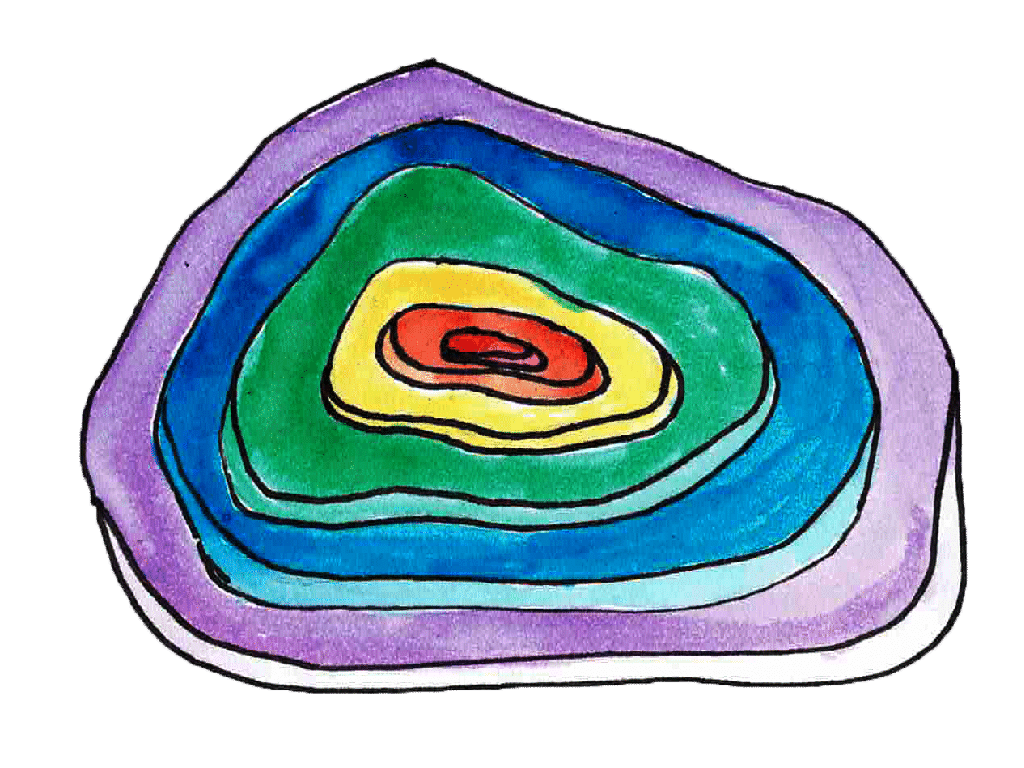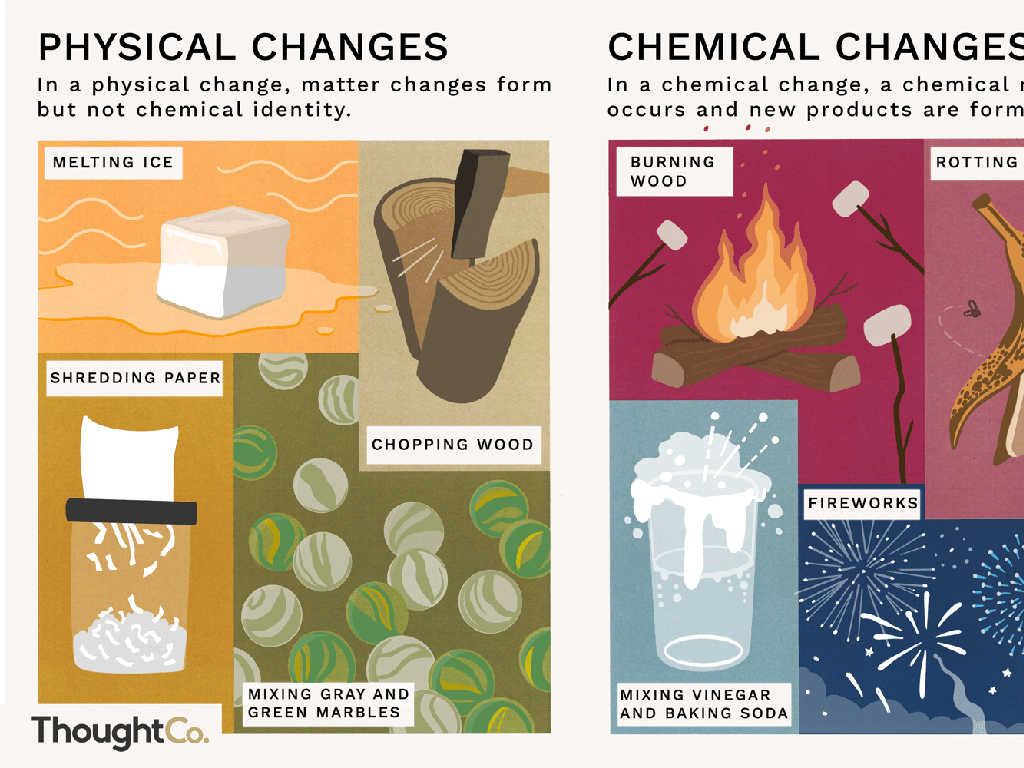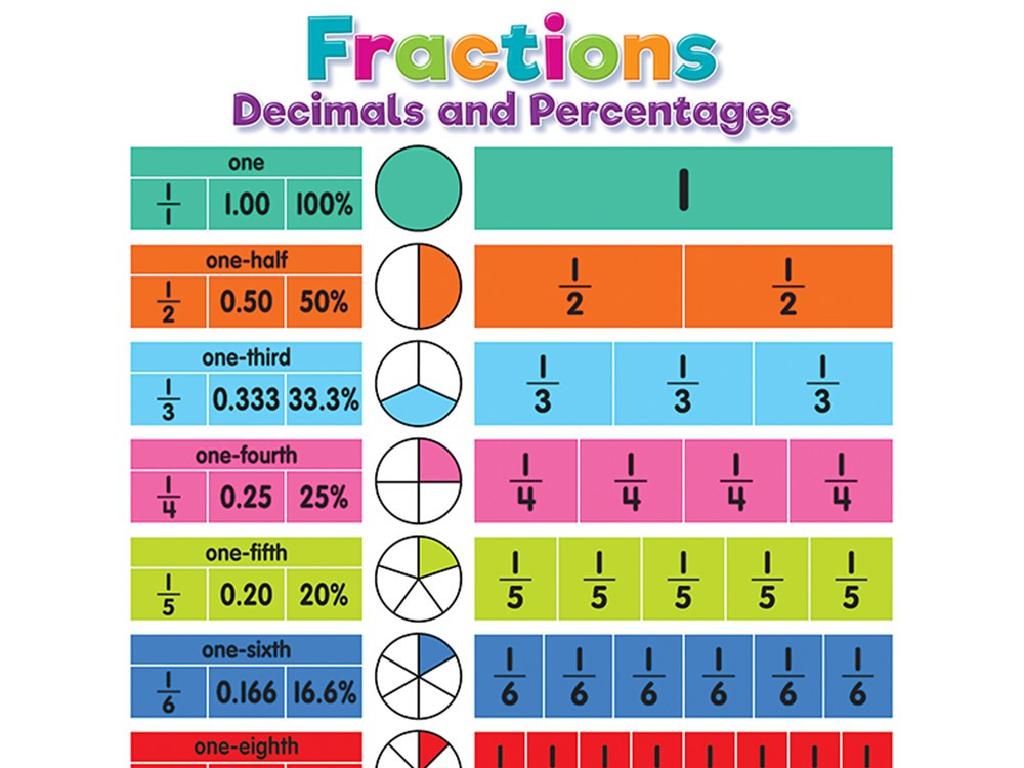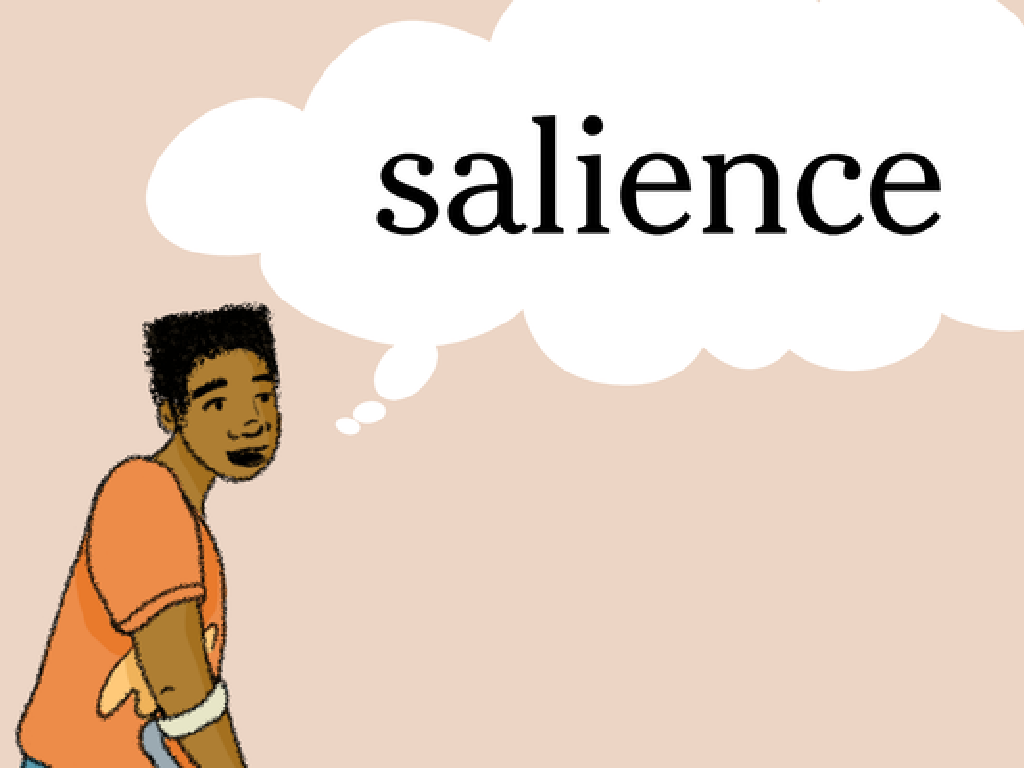Explore Chemical Structure And Properties: Food Flavors
Subject: Science
Grade: Sixth grade
Topic: Chemical Reactions
Please LOG IN to download the presentation. Access is available to registered users only.
View More Content
Introduction to Food Flavors
– What are flavors?
– Flavors enhance the taste and enjoyment of food.
– The five tastes
– Sweet, sour, bitter, salty, umami are the basic tastes we can identify.
– Senses and flavor perception
– Taste, smell, and sight contribute to how we experience flavors.
– Flavor’s role in food science
|
Begin the lesson by discussing what flavors are and their importance in our daily lives, especially in making food enjoyable and sometimes even determining our food choices. Explain the five basic tastes that our taste buds can detect: sweet, sour, bitter, salty, and umami, and give examples of each. Discuss how our senses, including taste, smell, and sight, work together to create the perception of flavor in our brains. Emphasize that understanding flavors is a key part of food science, which can lead to better nutrition and enjoyment of food. Encourage students to think about their favorite foods and what flavors they detect in them.
Chemical Structure of Flavors
– Molecules and flavor connection
– Molecules are groups of atoms; their structure determines flavor.
– Atoms and bonds in flavors
– Atoms connect with bonds to form molecules, affecting how we perceive taste.
– Simple flavor compound examples
– Vanilla: C8H8O3, Mint: C10H20O, how these structures influence their distinct tastes.
– Exploring taste through chemistry
|
This slide introduces the concept that the chemical structure of substances is directly related to the flavors we taste. Molecules, which are composed of atoms bonded together in specific ways, interact with our taste receptors to produce different flavors. For example, the molecule vanillin (C8H8O3) gives vanilla its characteristic flavor, while menthol (C10H20O) is responsible for the cool sensation of mint. Encourage students to think about how even small changes in molecular structure can alter the flavor of food. Discuss with students how chemistry is not just something that happens in a lab, but is also a part of their daily experiences, such as eating and cooking.
How Chemical Reactions Create Flavors
– Define chemical reaction
– A process where substances change into new ones with different properties
– Cooking: a chemical lab
– Baking bread, caramelizing sugar, and browning meat involve chemical changes
– Heat’s role in flavor
– Heating food can enhance, change, or reduce flavors
– Experiment with taste
|
This slide introduces the concept of chemical reactions and how they relate to cooking, which is a familiar activity for many students. Begin by defining a chemical reaction as a process that transforms substances into different ones with new properties. Explain that cooking is essentially a series of chemical reactions, with examples like baking bread, where dough rises and changes texture, or caramelizing sugar, where heat causes sugar to change flavor and color. Discuss how heat alters the taste of food, making it more delicious or sometimes bitter, and encourage students to think of examples from their own experiences. Finally, propose a simple taste-testing experiment with heated and unheated foods to illustrate the concept.
Extracting Flavors: From Nature to Our Tastebuds
– Methods to extract flavors
– Using tools like presses or distillation
– Science of flavor extraction
– It’s about separating flavor compounds
– Hands-on: Vanilla extraction
– We’ll use vanilla pods and alcohol
– Understanding extraction results
|
This slide introduces students to the concept of flavor extraction, a key process in food science. Begin by discussing various methods used to extract flavors from natural sources, such as pressing or distillation, and the science behind how these methods isolate flavor compounds. For a practical understanding, guide the class through a hands-on activity to extract vanilla flavor using vanilla pods and alcohol. Explain the steps involved and the expected outcome. After the activity, discuss with the students what they observed and what this tells us about the nature of flavor compounds and their solubility. This will help them grasp the real-world applications of chemical reactions in everyday life.
Artificial vs. Natural Flavors
– Defining artificial flavors
– Artificial flavors are man-made chemical compounds
– Comparing flavors: artificial vs. natural
– Natural flavors come from the source; artificial are created in labs
– Pros and cons of artificial flavors
– Artificial flavors can be cheaper and more stable but may have health concerns
– Impact on food choices
– Understanding flavors helps make informed dietary decisions
|
This slide aims to explain the concept of artificial and natural flavors, highlighting how they are made and their differences. Artificial flavors are synthesized chemicals designed to mimic natural tastes, while natural flavors are derived directly from plants or animals. Discuss the advantages of artificial flavors, such as cost-effectiveness and longer shelf life, as well as potential disadvantages, including health implications and environmental concerns. Emphasize the importance of being aware of these factors when making food choices. Encourage students to think critically about the flavors in their foods and to explore the science behind them.
Impact of Flavors on Nutrition and Health
– Flavors influence food choices
– Link between flavors and nutrition
– Certain flavors can indicate nutritional value, e.g., bitterness in leafy greens suggests high nutrient content.
– Choosing healthy, tasty foods
– Opt for natural flavors in fruits and veggies to make healthy eating enjoyable.
– Impact on health and well-being
– A balanced diet with a variety of flavors can promote overall health.
|
This slide aims to educate students on how the taste of food can affect their eating habits and consequently, their health. It’s important to discuss how certain flavors can make us prefer one food over another and how this preference influences our nutritional intake. Highlight the connection between naturally flavorful foods and their nutritional benefits, encouraging students to make healthier food choices by seeking out delicious yet nutritious options. Emphasize that a diet rich in a variety of flavors not only satisfies the palate but also supports physical health. Engage the class by asking them to share their favorite flavorful and healthy foods.
Class Activity: Flavor Lab!
– Create unique flavor combinations
– Observe chemical reactions
– Notice color, fizz, taste changes
– Record your observations
– Use a notebook to jot down reactions
– Discuss findings with the class
|
In this engaging class activity, students will mix safe, edible ingredients to create their own flavor combinations, fostering a hands-on understanding of chemical reactions in everyday life. Provide a variety of ingredients like fruit juices, baking soda, sugar, salt, and vinegar. Encourage creativity and ensure safety by supervising the mixing process. Students should observe changes such as color shifts, effervescence, or taste alterations, which indicate chemical reactions. They must document these observations carefully. After the experimentation, facilitate a discussion where students can share their experiences and learn from each other’s findings. This activity will not only make learning about chemical reactions fun but also help students appreciate the science behind food flavors.






